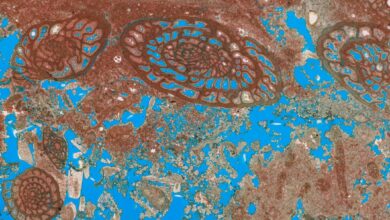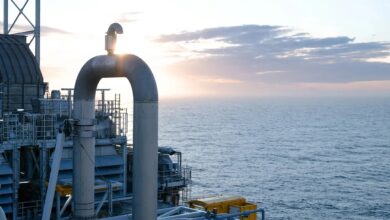Multilaterals, smart wells enable projects for RWE-Dea and Shell
 Germany’s Mittelplate development in one of Europe’s most environmentally sensitive coastal areas – Waddenzee – has been a major success, with much of it ascribed to the innovative way in which this spatially large but shallow field is being redeveloped utilising extended-reach multilateral wells.
Germany’s Mittelplate development in one of Europe’s most environmentally sensitive coastal areas – Waddenzee – has been a major success, with much of it ascribed to the innovative way in which this spatially large but shallow field is being redeveloped utilising extended-reach multilateral wells.
In a highly detailed presentation at the IADC World Drilling 2009 Conference & Exhibition in Dublin on 17 June, Thomas Kainer of operator RWE-Dea said the severely limited number of available slots at the well-pad of the artificial island constructed for Mittelplate meant that the only way forward was to construct multilaterals.
 Extended-reach multilaterals enabled the successful Mittelplate development in the environmentally sensitive Waddenzee area.
Extended-reach multilaterals enabled the successful Mittelplate development in the environmentally sensitive Waddenzee area.
He explained that with 35 geological targets but only 10, maybe with an extension, 14 slots at best, it was clear that those reservoir targets could not be covered in any other way but multilaterals to enable the productivity being sought.
On top of this, with targets to be drilled further and further away from the pad, this impacted the economics and drove the move towards multilaterals as a means of injecting fresh vigour into production from the coastal offshore field, which originally entered production in 1984 but was extended to onshore targets from 2000.
Concentrating on Well No. 23 (MPA 23), which is ranked as the first TAML (Technical Advancement of Multilateral) level five multilateral project in Germany with contingency for a “second life cycle,” Mr Kainer said the plan was to connect three targets using one multilateral well and that existing wells in the neighbourhood would be recompleted later with injection wells.
He said StatoilHydro’s huge Troll gas asset on the Norwegian Continental Shelf served as an inspiration for the project due to its technical sophistication and sheer scale.
SMART WELLS
It was Norman Pirie of Shell who turned the spotlight on smart well technology with the company’s Pierce field project in the UK sector of the North Sea, where he is tasked with delivery of subsea smart well systems.
A completion engineer by trade, Mr Pirie said that Pierce, development of which is based on an FPSO/subsea production infrastructure package, demanded this approach because of the need for “tight conformance control” of gas and water breakthrough in the field’s reservoirs.
It was important that the wells be controllable from the FPSO without recourse to bringing back a rig for shut-off operations, choke back and so forth.
Pierce is one of Shell’s most complex fields on the UKCS … a twin salt diaper structure that is highly faulted and therefore highly compartmentalised, with steeply dipping stratigraphy.
Because of the salt domes, it was explained that there was limited seismic-derived knowledge and therefore considerable reservoir uncertainty.
“We’d experienced problems with the field in the past, and management has been very difficult,” said Mr Pirie.
All production wells are currently in the Forties formation; the lower chalk formation remaining unexploited thus far … a secondary target for exploitation in later field life.
“Redevelopment-wise, we’re looking at multiple infill producers and, while we’re going to continue with water injection, we’re going to have the pressure support mechanism more as gas injection as opposed to water injection.
“For that reason, we’re basically going to be moving the producers further down into the formation, closer to the water-oil contact.
“A11 will be the first smart well that we’re going to do, and it’s currently on the schedule for the middle of next year. These are long horizontal producers … A11 is in the region of 5,000 ft.”




